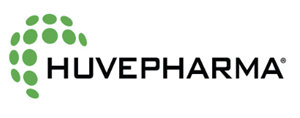Strategic challenges in the global control of HPAI
A recent scholarly review entitled "Strategic challenges in the global control of high pathogenicity avian influenza" presents a comprehensive analysis of HPAI management strategies. This authoritative publication, authored by leading experts in the field, examines the worldwide proliferation of the H5Nx lineage since 2005 and its consequent implications. The review addresses several critical aspects of HPAI control, including the documented ecological and epidemiological mutations of these viruses, their substantial impact on both wild and domesticated avian populations, and the associated risks of human transmission. Regarding prophylactic measures, the research presents substantial evidence supporting vaccination as an effective preventive intervention. Notable success has been documented in multiple jurisdictions, particularly in China and various European nations, where systematic poultry vaccination programs have been implemented to minimize zoonotic transmission risks associated with HPAI viruses. The findings emphasize that effective disease management necessitates the coordinated engagement of multiple stakeholders across international boundaries, supported by robust surveillance systems and standardized control protocols.
The implementation of poultry vaccination serves dual purposes: preventing avian influenza infections in susceptible regions and supporting production continuity where immediate eradication proves unfeasible. High-potency vaccines with appropriate antigenic matching demonstrate significant efficacy, requiring 103-104 times greater viral exposure for infection initiation, while reducing viral shedding by 102-105 fold in infected specimens. This reduction manifests in decreased transmission rates, quantified by reproduction ratios (R) below 1. When R<1, the intervention effectively prevents transmission chains and minimizes environmental contamination, thereby reducing exposure risks to humans and other mammals. Even in scenarios where R approaches but does not fall below 1, vaccination confers benefits through reduced clinical manifestation, diminished production losses, and limited outbreak scope. This containment strategy, when coupled with proper biosecurity measures, curtails environmental contamination and interpopulation viral spread. Furthermore, surveillance systems can be effectively implemented within vaccinated populations to verify infection-free status. Despite compelling scientific evidence supporting vaccination protocols and the global threat posed by avian influenza, major poultry-exporting nations demonstrate limited adoption of vaccination strategies, primarily due to international trade implications. Given this authoritative position from leading researchers, the current agricultural practices observed in U.S. poultry and dairy operations warrant careful examination.
Swayne DE, Sims LD, Brown I, Harder T, Stegeman A, Abolnik C, Delgado M, Awada L, Pavade G, Torres G. Strategic challenges in the global control of High Pathogenicity Avian Influenza. Revue scientifique et technique (International Office of Epizootics). 2024 Dec:89-102.











